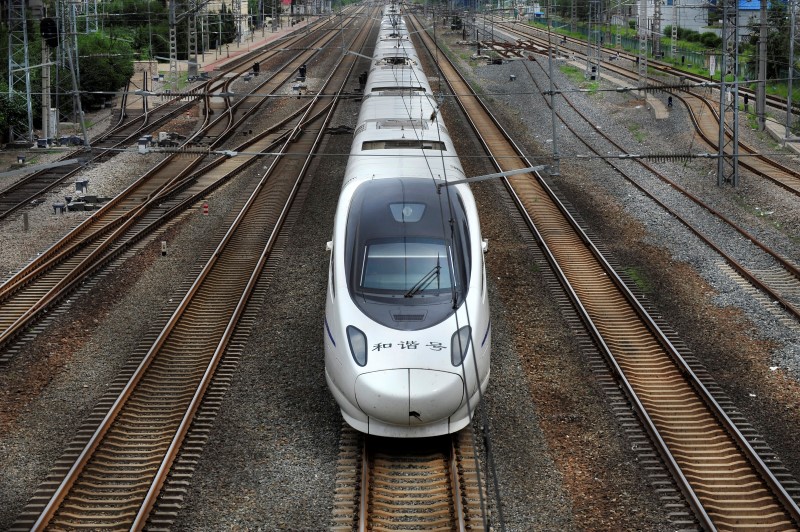(Bloomberg) -- Sign up for the New Economy Daily newsletter, follow us @economics and subscribe to our podcast.
China announced another stimulus measure to finance infrastructure projects, part of its push to drive investment and increase employment in the second half of this year as the economy starts to recover from the effects of Covid lockdowns.
The government will raise 300 billion yuan ($44.8 billion) to finance infrastructure projects by selling financial bonds and other methods, the State Council chaired by Premier Li Keqiang decided Wednesday, according to a report by the official Xinhua News Agency. Those bonds are usually sold by policy banks. The money will be used to replenish the capital of major projects such as new types of infrastructure, the statement on Thursday said.
These types of financial tools can help “expand effective investment, drive employment and facilitate consumption” and allow China to stick to its stance of “not flooding the economy with stimulus or over-printing money,” the meeting concluded, adding that this will help banks achieve a better match between their loans and deposits and improve the transmission of monetary policy.
The People’s Bank of China will take the lead to support China Development Bank and Agricultural Development Bank of China to raise the funds via financial bonds, according to a late Friday report by Financial News, a newspaper published by the central bank. The top economic planner will come up with a list of projects for the investment, in collaboration with other agencies and state-owned enterprises, it said.
Infrastructure projects are a key factor in determining how fast the economy can grow in the remaining six months of this year as other sources of growth such as housing and private consumption are still slowing. President Xi Jinping pledged last month to strive to meet economic targets for the year, although Beijing’s Covid Zero strategy has caused analysts to cut their forecasts for annual growth to levels far below the official goal of around 5.5%.
The announcement lifted the share price of heavy equipment makers in the onshore market. SANY Heavy Industry Co. climbed 4.1% on Friday, Zoomlion Heavy Industry Science and Technology Co. gained 4.9% and Jiangsu Hengli Hydraulic Co. rose 1.9%, while the benchmark CSI 300 Index dipped 0.4%.
New Stimulus
The new stimulus can in theory leverage as much as 1.2 trillion yuan in credit from the banking sector and capital markets, based on the government requirement that the money should be at least 20% of overall investment, according to Nomura Holdings (NYSE:NMR) Inc. economists including Lu Ting. But its impact in reality could be much smaller, and won’t be enough to plug an estimated 6 trillion yuan funding gap that the government has to fill if it wants to carry out its proactive fiscal policy, they wrote in a note Friday.
Local authorities are under huge financial stress this year due to the cost of Covid controls and tax cuts, as well as a slump in land sales that reduced a key source of revenue.
The new money is in addition to the 800 billion yuan the three policy banks were told in June to lend for infrastructure projects. That loan quota has already been allocated to the policy banks, local newspaper the 21st Century Business Herald reported Friday, citing sources it didn’t identify.
Read more: What Are the Policy Banks China Uses to Spur Economy?: QuickTake
China Development Bank was allowed to boost lending by 400 billion yuan, Agricultural Development Bank of China’s quota for new credit was 300 billion yuan and another 100 billion yuan was assigned to the Export-Import Bank of China, the newspaper reported. The development banks’ main source of funds is issuing bonds or loans from China’s central bank, although it hasn’t been announced where the money to finance these new loans will come from.
The size of the additional bonds is only a fraction of what the policy banks normally issue in a year. The banks sold a gross amount of 5.5 trillion yuan bonds in the interbank market last year, with a monthly average of 460 billion yuan, according to Bloomberg calculation based on Chinabond and Shanghai Clearing House data. Between January and May this year, they issued 2.3 trillion yuan in bonds.
The State Council, which is China’s cabinet, also vowed to implement a batch of investment projects that are aimed at increasing workers’ income and boosting their consumption. These projects will have to spend more than 30% of central government funding on paying workers, up from 15% previously.
(Adds report in fourth graph, updates share prices in sixth.)
©2022 Bloomberg L.P.

